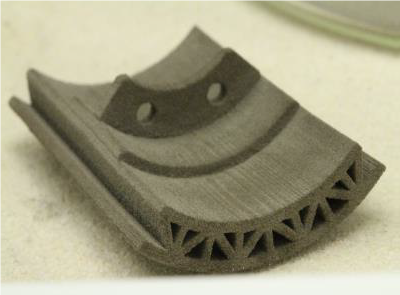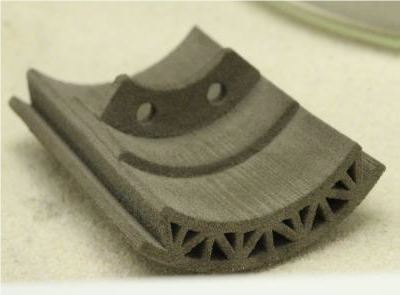The fine spatial control of material placement now possible with additive manufacturing (AM), or 3D printing, is enabling for both processing and controlling the properties and performance of energetic materials. Energetic materials, or simply energetics, are monomolecular materials or composite formulations which can exothermically react through chemical reactions. Some examples of energetic materials are propellants, explosives, pyrotechnics, and reactive formulations such as intermetallic mixtures and thermite composites.
There exists a need to develop energetic components with optimized safety and performance for a variety of applications, as well as to reduce the cost of doing HE-driven experiments (e.g., producing a planar shock wave) to evaluate inert materials or other energetic materials.
Livermore Lab researchers have developed a method that combines additive manufacturing (AM) with an infill step to render a final component which is energetic. In this case, AM is first used to print a part of the system, and this material can either be inert or energetic on its own. A second material is subsequently added to the structure via a second technique such as casting, melt infiltration, a second AM step/process, or other deposition techniques. The result is a final energetic part with some desired safety and/or performance properties.
There are several major advantages of this technique. First, this approach allows the strategic placement of one material (energetic, or not) into the final assembly. Such applications would be metallized explosives, where the HE/metal response can be tailored by the placement of the metal into a preformed scaffold. Second, by intentionally leaving out one component of the energetic system until desired, the part may be made safer to handle or secure from insult. Once the final material is infilled into the part, it behaves as intended. A third application is to use AM to print custom molds for explosives, which are then filled with a castable energetic to produce complex geometries such as plane wave generators. Post processing may be necessary to render the final part, depending on the application.
- Metallized explosives with spatially-controlled placement of the metal
- Controlling safety of energetic articles
- Plane wave generators
- Structural energetics
- Safer handling/shipping of materials
LLNL has filed for patent protection cover this technology:
IL12904 - Combining Additively Manufactured Parts with an Infill Step for Customizable and Novel Energetic Systems (US Patent 11027482)




